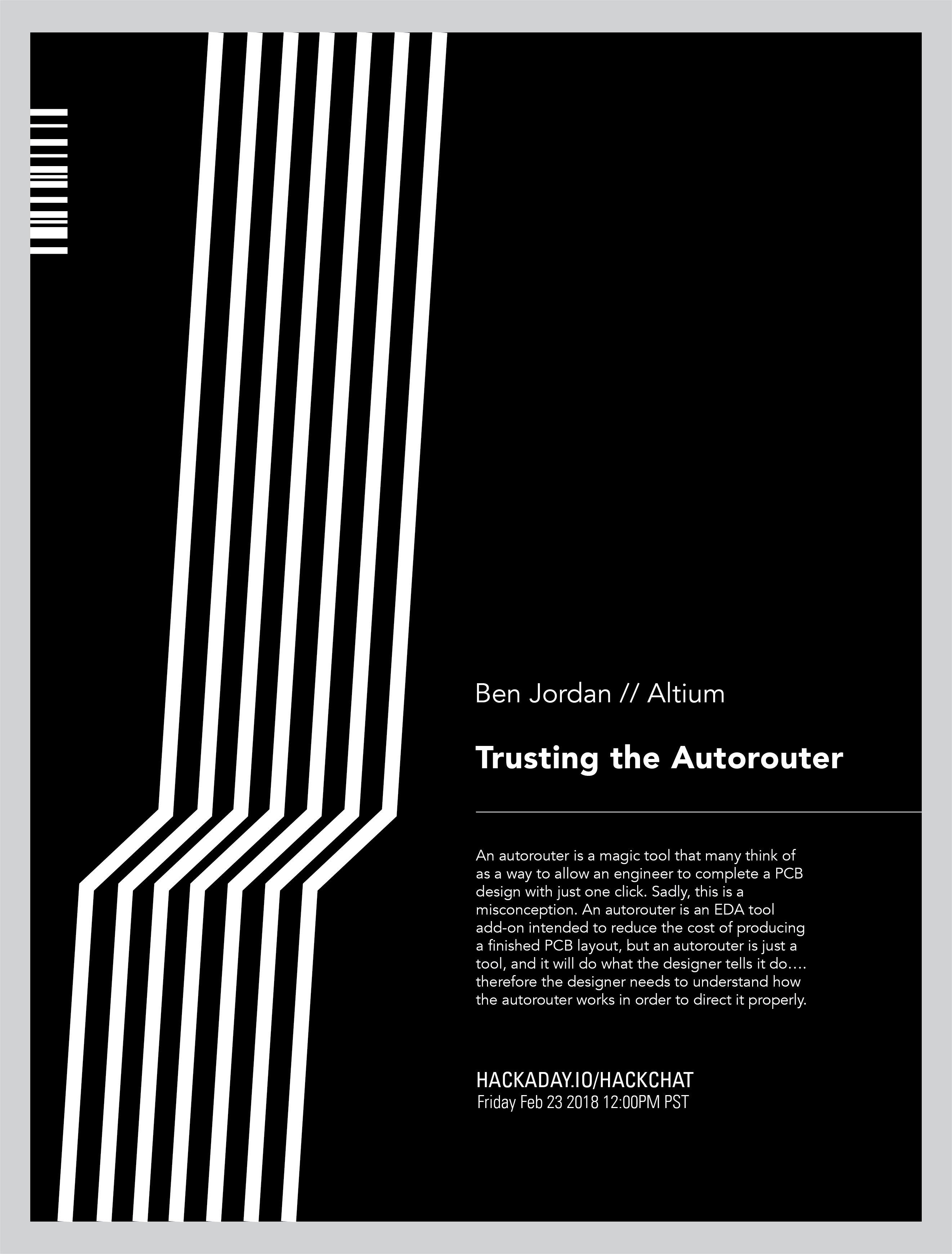Join this Hack Chat by clicking on the JOIN HACK CHAT button.
______________________________________________________________________________
Ben Jordan will be co-hosting the Hack Chat this week. This Hack Chat is at noon PST, Friday, February 23rd.
Time Zones got you down? Here's a handy count down timer!
An autorouter is a magic tool that many think of as a way to allow an engineer to complete a PCB design with just one click. Sadly, this is a misconception. An autorouter is an EDA tool add-on intended to reduce the cost of producing a finished PCB layout, but an autorouter is just a tool, and it will do what the designer tells it do…. therefore the designer needs to understand how the autorouter works in order to direct it properly.
In this chat, we welcome Ben Jordan from Altium to talk about Altium Designer and CircuitMaker. To get the best performance out of an autorouter, it's good to understand how the software works behind the scenes. If you're interested in trying Altium Designer, you can download a free trial.
Ben Jordan is Director of Community Tools and Content at Altium. Ben is a Computer Systems engineer, with 25 years experience in board-level hardware and embedded systems design. Ben is also very much a maker, having picked up his first soldering iron at 8 years of age, and cutting his first lines of assembly language at 12. Ben spends any spare moment playing with audio electronics and playing guitar.
In this chat, we'll discuss:
- Routing technology
- Multiboard design
- Multilayer design
- Mixed signal design







For those skeptical of trusting autorouters, especially based on old experiences, are there success stories to casually view? (sort of the opposite of the T-shirt) I suppose like computer benchmarks, there's also the matter of how trustworthy they are?